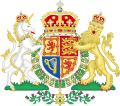During the nineteenth century, the functions of government increased, particularly at a local level dealing with issues such as public health, poor law relief, roads and education, and local authorities were active in providing water supplies, drainage, hospitals and town planning. To exercise control over these local activities, a number of supervisory boards such as the Board of Supervision for Poor Relief (1845–1894), the General Board of Commissioners in Lunacy (1857–1913) and the Scotch Education Department (a committee of the Privy Council) were established. However the accountability of these boards was not clear, they were staffed by amateurs and they increased the scope for government patronage. In 1869 Scottish MPs asked Gladstone to appoint a Scottish Secretary with responsibility for the boards, but the post of Secretary for Scotland, and with it, the Scottish Office, were not created until 1885.
Departments
By the time the Scottish Office was formed in 1885, a number of institutions of government existed exclusively for Scotland: the Board of Supervision for Poor Relief which had been established in 1828, the Fishery Board which had been limited to Scotland in 1849, the General Board of Commissioners in Lunacy (established in 1857), the Scotch Education Department (established in 1872), and the Prisons Commission, created in 1877. In 1886, a Crofters Commission was established, and lasted until 1911. In 1894, the Board of Supervision for Poor Relief became the Local Government Board for Scotland, and three years later a Congested Districts Board was established and lasted until 1911. To these were added the Scottish Board of Agriculture in 1912, the Highlands and Islands Medical Services Board the following year, and the Scottish Insurance Commissioners in 1911. [1]
These bodies were gradually consolidated and reformed thereafter. In 1919, a Board of Health was formed to bring together and extend the functions of the Insurance Commissioners, Highlands and Islands Medical Services Board, and the Local Government Board for Scotland. This Board, along with the Board of Agriculture and the Prisons Commission were abolished in 1928 and replaced with departments, for Health, Agriculture and Prisons respectively (by the Reorganisation of Offices (Scotland) Act 1928). [1]
The next major phase of reorganisation occurred in 1939, following the Gilmour Committee Report on Scottish Administration; by the Reorganisation of Offices (Scotland) Act 1939, the Scottish Education Department (which is what the Scotch Education Department had been called since 1918), the Department of Health for Scotland, the Department of Agriculture for Scotland, the Prisons Department for Scotland, and the Fishery Board for Scotland had their functions transferred to the Secretary of State. [2] The departments were reformed, with the functions of the Fishery Board and the Prisons Department merged into a new Scottish Home Department. [3] Agriculture, Education and Health were left largely intact and reformed into Departments. The portfolios were widened when the Scottish Office received functions relating to the Crown Estates in 1943 and forestry in 1945, and after the Report of the Royal Commission on Scottish Affairs in 1954. [4]
The departmental structure changed in 1960, when responsibility for fisheries was removed from the Home Office and added the Department of Agriculture (it then became the Department of Agriculture and Fisheries), and in 1962, when the Home and Health departments were merged (into the Scottish Home and Health Department). A new Development Department was also established in 1962. In 1973, they were joined by a new Scottish Economic Planning Department, [5] which was renamed the Scottish Industry Department in 1983. [6] All of the Departments had their names changed in 1991, when "Scottish Office" was prefixed to them, and at the same time the Development Department was renamed to the Scottish Office Environment Department. [7]
The year 1995 brought further changes; the Industry Department was merged with Education to form the Scottish Office Education and Industry Department; [8] the Environment Department reverted to its old name; the Department of Agriculture and Fisheries was renamed the Scottish Office Agriculture, Environment and Fisheries Department; and the Home and Health Department was broken up: the new Scottish Office Home Department was still headed by a permanent secretary, but Scottish Office Health Department was not, instead comprising the Management Executive for NHS in Scotland, the Chief Scientist Office, the Public Health Policy Unit, Medical Services, and Nursing Services. [8]
All of the Departments were abolished in 1999 and most of their functions transferred to the newly formed Scottish Executive.





